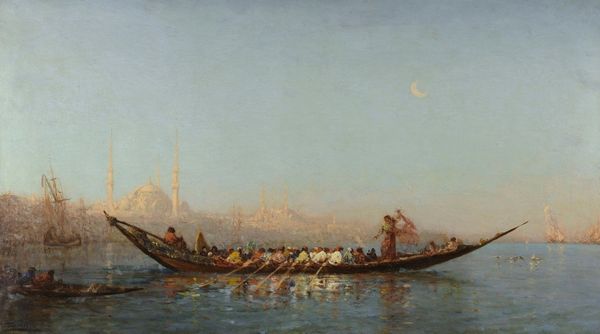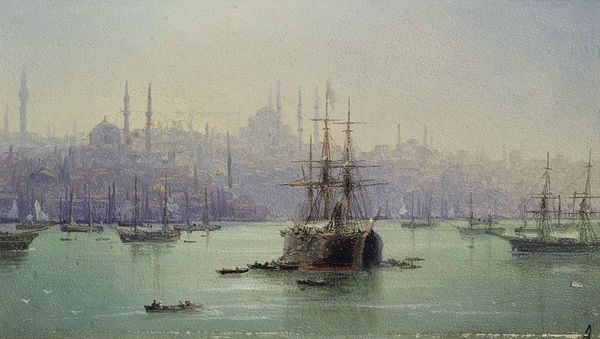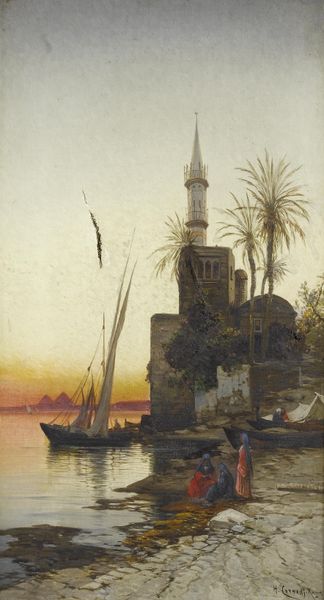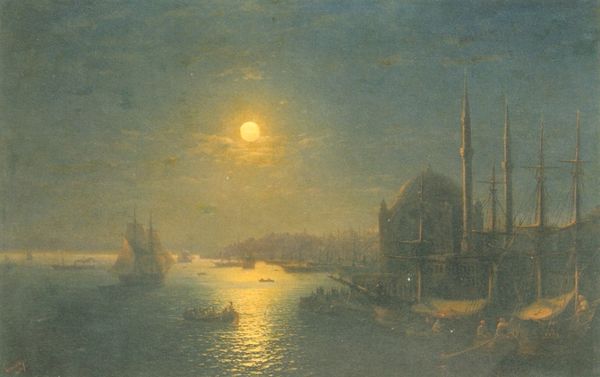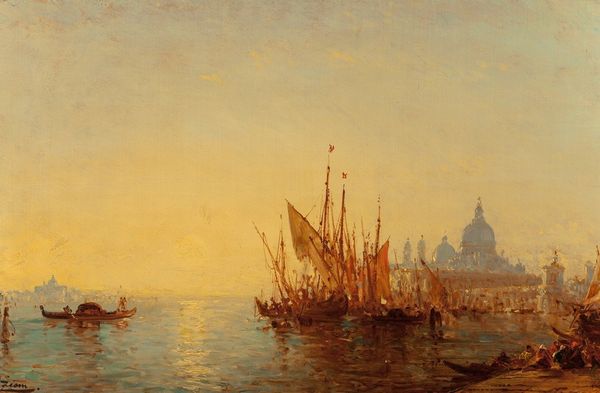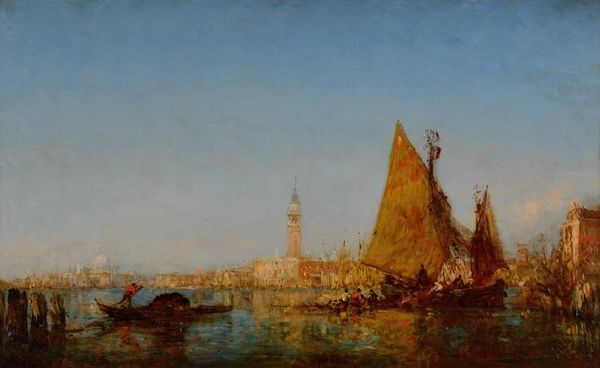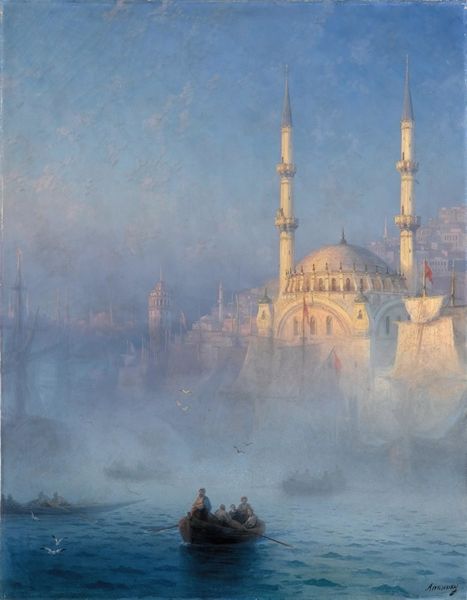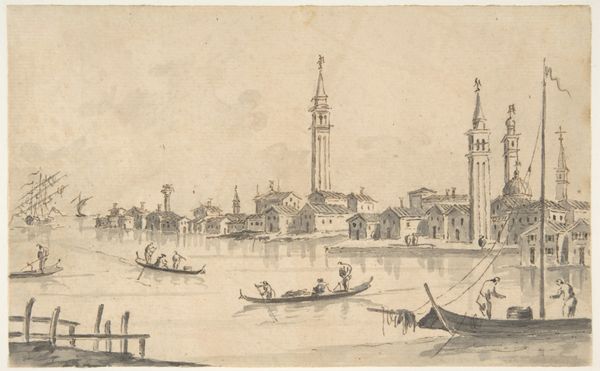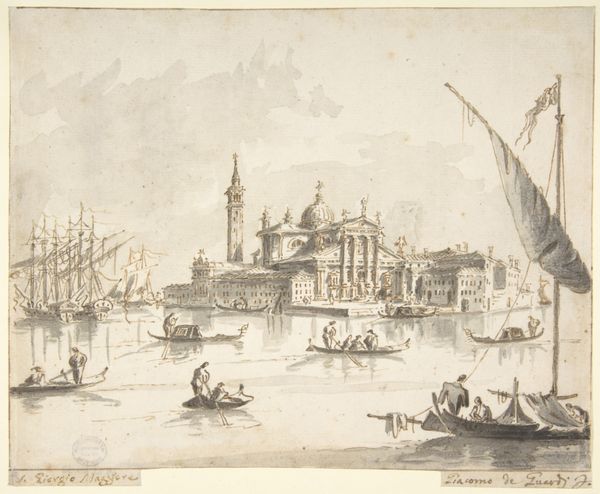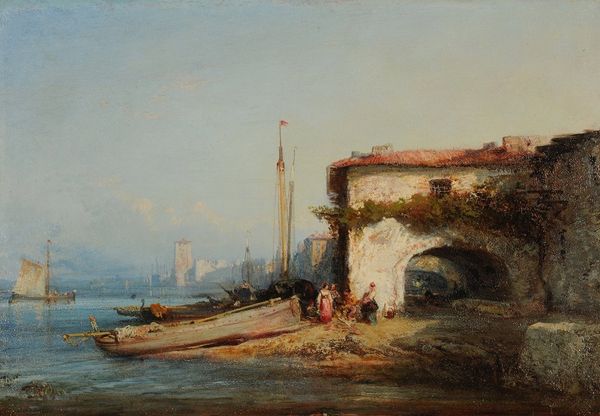
Copyright: Public Domain: Artvee
Editor: We’re looking at Félix Ziem's "Le Bosphore au matin," painted before 1874, an oil painting depicting a cityscape along the Bosphorus. It's a tranquil, almost hazy scene, dominated by a large, ornate mosque in the distance. I'm struck by how the artist captured the morning light. What historical or cultural layers do you see in this painting? Curator: The appeal of Ziem’s Orientalist works hinged on Western European desires and fantasies, and specifically the French. Consider how Ziem capitalised on France’s complex relationship with the Ottoman Empire, a fascination mixed with political maneuvering. He wasn't necessarily interested in realistic depiction; more a stage for Western dreams, right? How do you see the brushwork playing into this romanticized vision? Editor: I see what you mean, the brushstrokes do appear quite loose and impressionistic, contributing to the dreamy atmosphere. They certainly prioritize aesthetics over strict accuracy. But does his choice to paint *en plein air* suggest some element of wanting to record a certain fleeting reality? Curator: Good point! Painting *en plein air*, especially at this time, does mark a shift towards direct observation. But still, his is filtered through artistic license. Note how Ziem chooses to prominently display local boats and figures, crafting a vision of a lively but passively observed "Orient." This raises questions about whose perspective is centered here and why. Does the focus on the boats seem staged to you? Editor: I hadn't considered it that way, but it definitely feels curated now that you point it out. It’s like he is showcasing an idea of the Orient. Thanks, it gave me a lot to think about! Curator: My pleasure! These paintings remind us that seeing is never neutral, and art always participates in a complex dialogue between cultures and power.
Comments
No comments
Be the first to comment and join the conversation on the ultimate creative platform.
